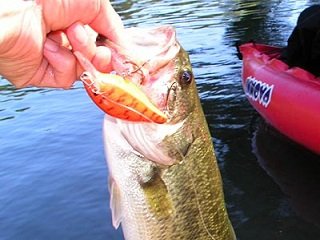 As the summer heat begins to cool down, and autumn approaches, many will feel their thoughts turn to football and comfort food. Fall is my favorite time of the year, and it’s not just because of the start of football season (though, that’s a big reason), but also because some of the best action on the water accompanies the cooler temperatures and taking advantage of drastic changes in fish habits can make for exciting days on the water. The lure I reach for time and time again this time of year is a crankbait. Read further to discover why you should do the same.
As the summer heat begins to cool down, and autumn approaches, many will feel their thoughts turn to football and comfort food. Fall is my favorite time of the year, and it’s not just because of the start of football season (though, that’s a big reason), but also because some of the best action on the water accompanies the cooler temperatures and taking advantage of drastic changes in fish habits can make for exciting days on the water. The lure I reach for time and time again this time of year is a crankbait. Read further to discover why you should do the same.
When the temperatures change in the Fall, bass become a little more aggressive than they were during the dog days of summer, when their habits are dictated by the heat and the sun. They’ll move into shallow water in search of food, such as baitfish, who, during autumn, will be without as much shelter as the weed beds die back. This is why crankbaits, which imitate baitfish perfectly, work so well.
If you plan to use crankbaits primarily, then I suggest using a setup specifically designed to do so to the utmost potential of the lure. It might be a good idea to grab a crankbait rod, the tips of which are designed to absorb impact and the rattle of the bait better than other rods. Ten or twelve-pound monofilament or fluorocarbon line will work well in open water, but you’ll want to go heavier when dealing with weeds or cover. I also suggest picking up crankbaits that run at different depths, to handle any possible situation and cover the water completely.
Because the bass are in search of food during the Fall, it can take a little time before you stumble across the roaming fish. Points and secluded creeks—where baitfish congregate—are good places to start your search. Another prime location is the edge of receding weed beds. Once a haven for baitfish, you can slowly work the edges of the weeds, starting with a shallow crankbait. If you feel the lure lose its rattle, that means you’ve hooked a weed though. No worries, however. Simply rip your rod to the right or left to dislodge the cabbage and go back to work.
Also, try to find some structure and cover, like logs or docks. The real beauty of crankbaits stems from their bills, which enable them to bump into such objects and not get hung up (most of the time). Take advantage of the erratic action this creates and intentionally run the crankbait into these objects to entice fish. It won’t take long before you feel the rattle of the bait turn into the sudden impact of an aggressive strike.
Adapting to the ever-changing habits of fish can seem like a futile battle, due to the dozens of factors that go into the equation. However, sticking to your gut and being patient, especially during the sometimes sporadic autumn months, will mean the difference between a good day on the water and a bad one. Although, as I’ve said before: a bad day on the water is still better than a good day at work, right?








